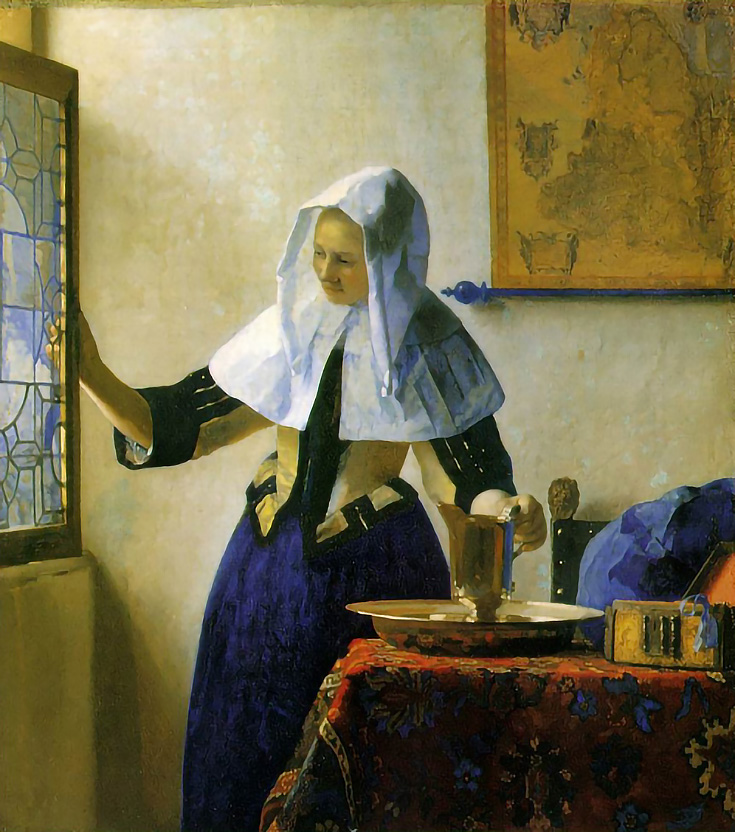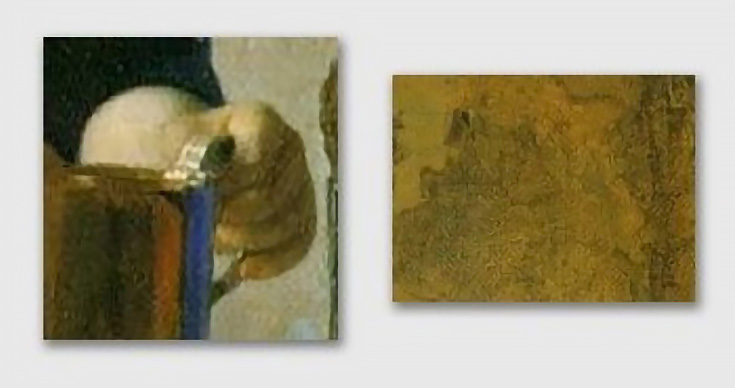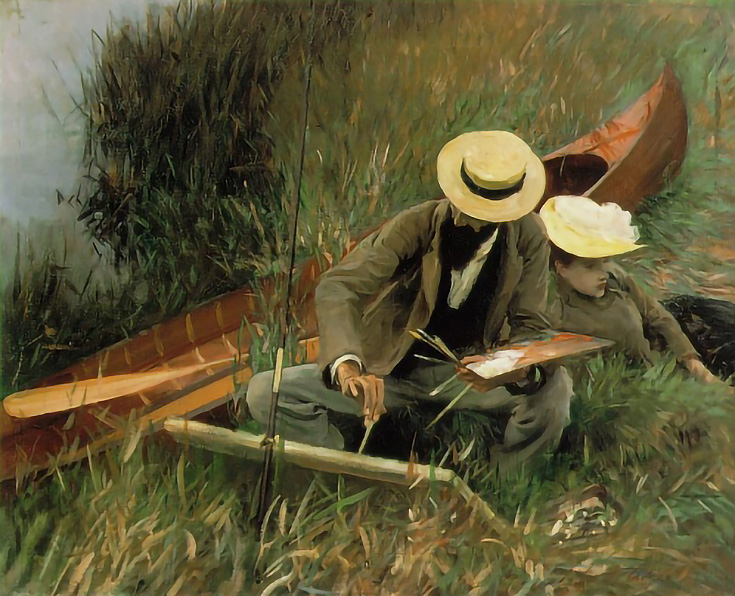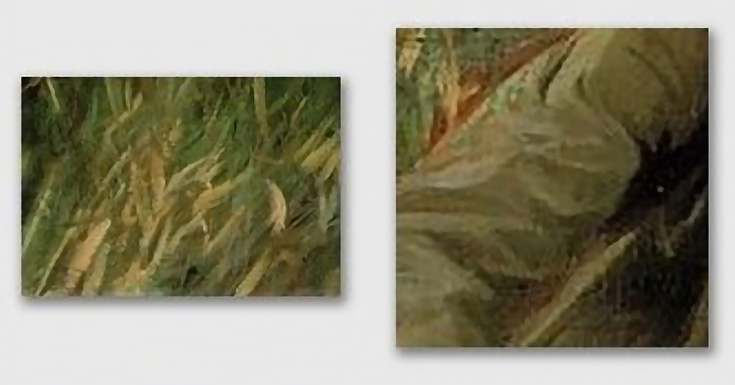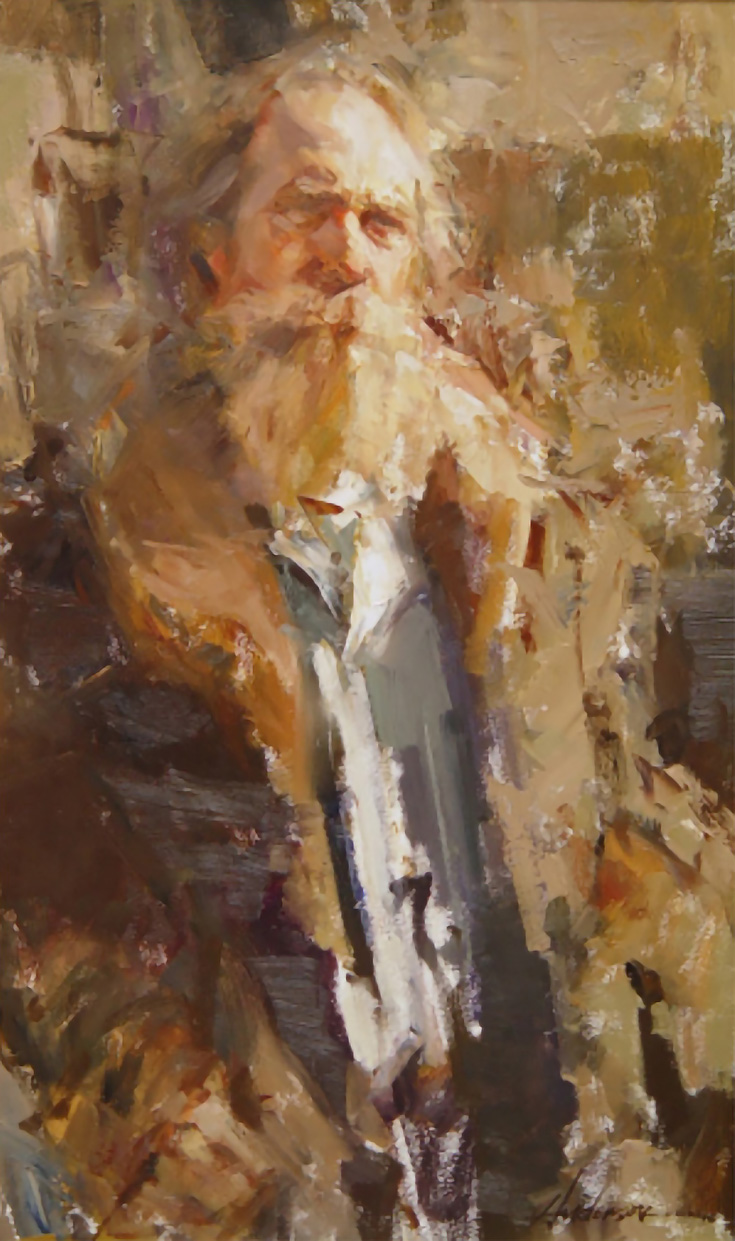The act of painting is not a legal contract, yet too often we think we must dot every “i” and cross every “t”. Indeed, unscrambling the visual world can be daunting, but to include too many small descriptions (and attempting to give each of them our utmost attention) can cause mental bedlam for both the artist AND viewer.
So just how much description is necessary in a painting? There’s no easy answer, but for starters, let’s dust off the economy principle: leave out what you don’t need.
Of course each individual artist will determine what isn’t needed for them, and the amount of detail that artist decides to put into a painting becomes part of their style.
Nevertheless, from highly realistic paintings to minimally descriptive art, there’s always room for economy. Economy can serve us well in the palette we choose, in how we select our images, and even how we place them on our canvas—but for this discussion, I’d like to focus on the economy of descriptive details and look at some examples of economy from three different time periods.
Examples of economy, then and now
Jan Vermeer, 17th c. Dutch painter, utilized economy by letting shape and gesture tell the supporting story. Take a look at his Young Woman with a Water Pitcher.
It appears to be highly detailed, but look again at two of the supporting characters in this piece—first, notice the woman’s hand holding the pitcher; and second, examine the large map hanging on the wall.
As you’ll see, Vermeer didn’t need to show every wrinkle in the skin of her fingers or to print the names of every country on the map.
What he DID say was “arm in light; hand in shadow” and “map on wall.” Search more closely and you’ll find other particulars he didn’t need as well.
Two hundred years later as John Singer Sargent matured as a painter, he too found ways to say more with less. We can see examples of some of his tactics in this next painting, entitled Paul Helleu Sketching with his Wife.
Look particularly closely at his “grasses” and “wrinkled fabric.”
If Vermeer had painted this subject, how much would he have shown that Sargent didn’t need to show? Yet both are such strong artists!
Jump forward another hundred years. Carolyn Anderson’s limited brushstrokes (seen below) make a very powerful painting.
In this portrait, Anderson doesn’t need detailed descriptions. Instead, her brush loaded with the right color and moving in the right direction tells the entire story. Look how she’s said “shoulder and arm in light” and “eye in shadow”.
The way that Vermeer, Sargent and Anderson painted proves that, like all compositional principles, economy can be a very useful tool for artists.
How to paint more economically
The best way to learn how to use any kind of tool is to try it out. Here’s one way to implement economy in your next painting:
Set up an apple as a single still life object. Select ONE brush and a small format—say 6” x 6”—for your canvas.
Prepare your drawing and whatever underpainting you need, then create a complete painting of that apple (and background) using only fifty brushstrokes.
A brushstroke is defined as from the time the brush touches the surface until it lifts—does a limit of 50 sound difficult? How do you think it will change your style?
There’s only one way to know for sure, and that’s to give this little homework exercise a shot. Who knows. . . perhaps painting with economy is exactly what you need!
This post may contain affiliate links.
